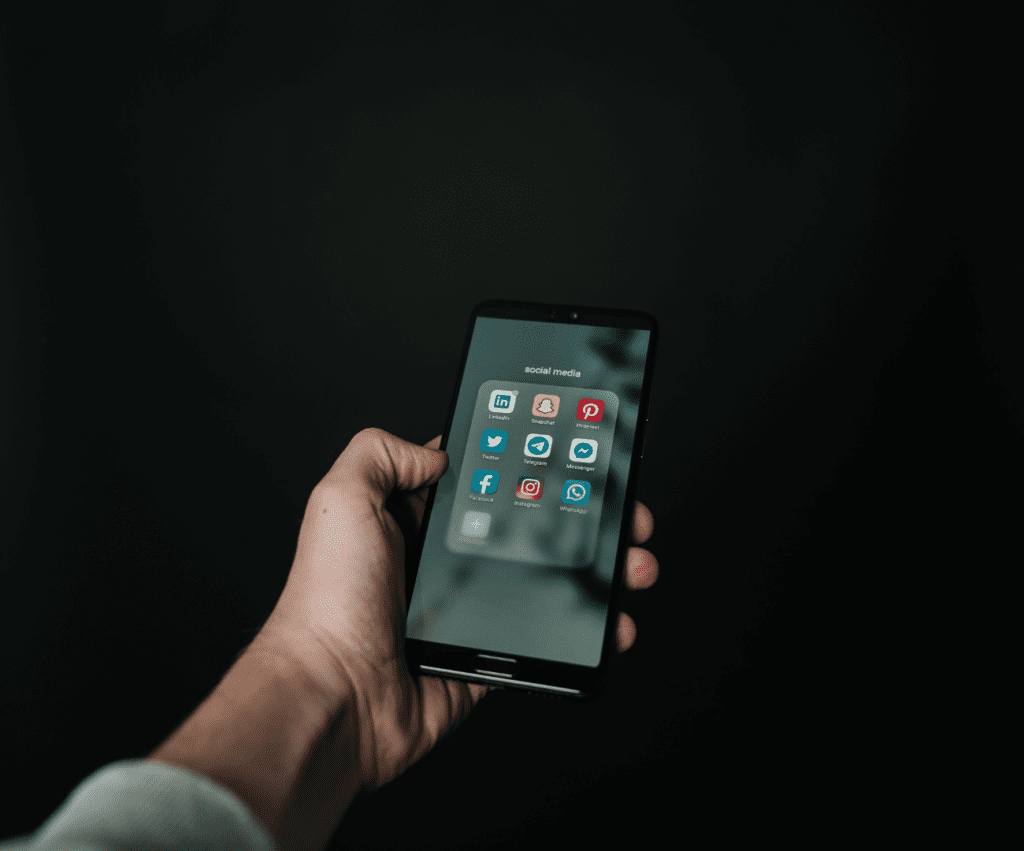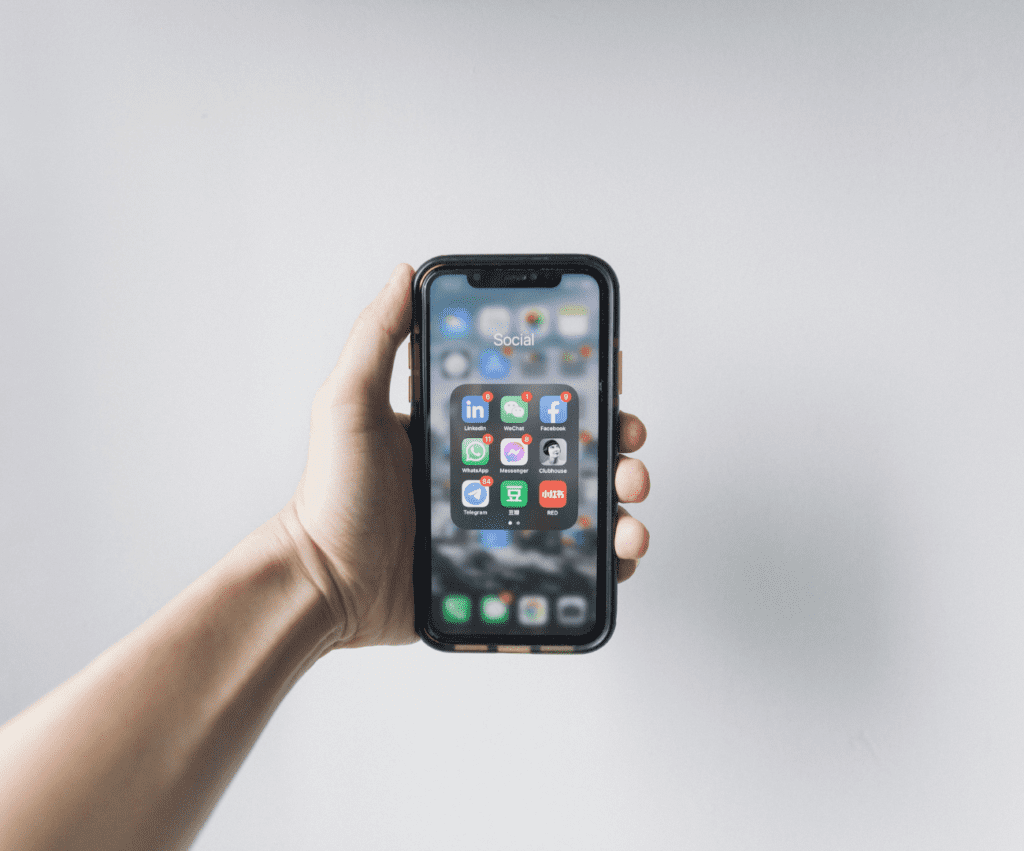Owing to the intuitive mobile app UI design strategies, businesses continue to scale their operations.
Since mobility has become a lifestyle for the average user, statistics suggest that 90% of the userbase that an average business pulls in, are through smart devices.
However, when it comes to apps interface, or the ‘design mobile UI’ analogy, not every application is alike.
Some of them, despite having a good usability philosophy, don’t even make it to the light of the day. In other words, if you are looking to rake in revenue while maintaining a steady stream of active mobile users, you need to know the ins and outs of the mobile app UI design process.
How This Post Will Benefit You?
As mentioned earlier, designers bank on the philosophy associated with apps interface. People spend the majority of their time on mobiles, using all kinds of applications. However, these users also have a low attention span, since there are tons of mobile applications, with more or less, the same functionality.
In that regard, the design goes a long way toward maintaining user interest levels, raking in a high number of downloads, and continued business opportunities – i.e., if the mobile app UI design is aligned with the latest design trends.
The benefits of this post on designing mobile ui are twofold.
First, you will understand what needs to be done, and the list of different processes that go into creating a mobile app UI design.
Secondly, if you’re not a designer, but a business owner, you’ll, at least, have a concept of where your mobile apps interface team needs to go. Direction, alongside a well-executed strategy concerning mobile application design, goes a long way.
Let’s get started.
Mobile UI vs Mobile UX – What Are the Key Differences?

The main difference between mobile User Interface (UI) and User Experience (UX) is the scope of the design vs interaction scenarios.
While UI is focused on designing the look, feel, and interactivity of an application or product, UX focuses on the overall experience a user has while using it.
Mobile app UI design emphasizes designing an aesthetically pleasing interface with intuitive button placement that provides great usability.
These designs aim to provide a visually appealing display to draw users in, as well as ensure that interactions are easy to understand and execute. UX, or user experience-wise, navigation should be simple and logical so users can quickly find what they’re looking for without becoming frustrated or confused.
To that effect, UX designers approach their work from a different angle; their goal is to create a streamlined journey for customers who use your product or service from start to finish. They study how users interact with products through analytics and usability testing so they can refine their designs over time until they achieve maximum satisfaction levels.
Customer Interactions must be contextualized within their use case scenarios – whether it’s making quick adjustments in transit on their smartphone or handling complex financial transactions at home via laptop – each interaction should yield value in both ease-of-use and enjoyment factors while effectively meeting customer objectives.
While many times these two disciplines overlap – since both involve developing an enjoyable user experience – remember that Mobile UI ensures applications are easy to use visually; whereas UX makes sure all parts of interacting with a product are smooth from start to finish no matter what device you’re using.
What Is Minimalistic Mobile App UI Design?
A minimalistic mobile app UI design is the practice of optimizing and simplifying a user interface to create a streamlined, clutter-free experience that feels natural and effortless.
This style emphasizes clean lines, uncluttered surfaces, and simple typography, removing any distracting or unnecessary elements. It favors subtle transitions over flashy animations or graphic effects, focusing instead on creating an enjoyable user experience through carefully crafted interfaces that communicate their purpose clearly and effectively.
When comparing a minimalistic mobile app UI design with one that is more ornate and complex in appearance, several key differences can be observed.
A minimalist approach typically uses fewer colors than its more elaborate counterpart, opting for largely monochromatic palettes in muted tones such as grayscale or light blues for added sophistication.
The shapes used are mostly simple geometric forms like circles and rectangles rather than more intricate curves or patterns found in other designs. There may also be limited use of imagery, such as icons or logos; instead, emphasis is placed on concise text information to convey messages quickly without confusion.
The primary benefit of utilizing minimalistic mobile app UI design lies within the usability aspect—simpler layouts require less cognitive load from users to interpret what they need to do next, minimizing errors typical when navigating overly complicated menus or options screens.
Furthermore, the risk of overwhelming users with too-abundant choices—the “paradox of choice”—is allayed by limiting available options per page to only those necessary for achieving particular tasks at hand (with related options being relocated elsewhere if desired).
Best Tips On Mobile App UI Design

Starting with some of the handiest tips on mobile app ui design, we’ll adopt a step-by-step format.
Here’s what you need to know.
- Determine What You’re Building And The Scope of a Mobile Application
To determine what we are building a mobile application for and its scope, we must first analyze the problem at hand.
This analysis requires us to break down the underlying needs, objectives, and requirements of the application in terms of customer demand or technological advancement. We must also consider any competitive advantages that may be available from existing applications, as well as technologies that can assist in creating an optimal user experience.
To begin with, we need to identify the type of application needed.
Are we looking to build an online store? A personal organizer tool? Or a gaming experience?
Understanding the primary purpose will help us to narrow down specific technical requirements and how best to meet them.
Once we have determined the primary use case for our mobile application, it is important to understand how users interact with such applications.
This can be done through customer feedback surveys or research into current usage trends across popular platforms like iOS and Android devices. Researching enables creators to gain insight into user behaviors which would give clues on how to optimize the design process of a successful mobile app.
We should also keep in mind any 3rd party app integrations needed for data security or payment processing capabilities when determining our scope for development services required for delivering a complete solution release within budget constraints defined by stakeholders (if applicable).
Don’t forget the fact that it is uber important to know that companies create apps based on iterative processes so they can quickly adjust their plans based on changing customer demands over time instead of developing static solutions based solely on initial assumptions.
- Create a UX Wireframe As a Baseline For Design Mobile UI Operation
Creating a UX wireframe for mobile app users is an essential process in the app development life cycle.
It facilitates the designer to analyze the specifications of the end-user and plan how they should be included in the design of an application.
The process requires time, thought, and creativity from both the designer and product team members who need to collaborate when creating a UX wireframe for mobile app users.
To create an effective UX wireframe for mobile app users, designers must use a comparative analysis approach to determine which features will most benefit their user base.
From this research, designers can gather information on popular features included in other successful applications, as well as obtain insights into what works – and what doesn’t – in existing designs.
The next step is to identify common user tasks within your targeted user base so you can create a flowchart representing how each task will be accomplished in your designed application. Doing so will help to establish basic navigation paths within your design prototype so you can craft interactions with ease during later stages of development.
Once all relevant tasks are identified, it’s time for graphic elements such as buttons, text boxes, or menus used throughout the interface to be created using graphic design tools like Sketch or Adobe XD.
Selecting appropriate fonts and colors associated with each specific element is also necessary when designing visual details within a UI wireframe since this influences aesthetics immensely during interaction flows between screens in an application experience.
Once all graphical elements have been established it’s possible to move on towards prototypes being developed using interactive prototyping tools such as InVision Studio or Figma.
- Create a Prototype After UX Wireframe Work
After a UX wireframe has been completed, the next step in the process to develop an app prototype is to create an interactive version.
This can be done using prototyping software such as InVision, Adobe XD, or Marvel.
Prototyping tools offer design teams the ability to make their user interface come alive and see how users will interact with the product.
Here are detailed steps for developing a mobile app prototype:
- Plan out the interactions:
The first step is to plan out all the user interactions that need to take place within your app’s design. Evaluate each potential interaction and decide which ones are necessary and identify any redundancies that can be removed from your plans.
- Create individual UI elements:
Once you have planned out all your user interactions, it’s time to begin creating each visual element needed for your prototype design – such as buttons, menus, images, etc.
Each element should be designed using basic shapes like rectangles and circles to keep things simple yet visually pleasing. For apps involving image recognition or specific actions like swiping & dragging – use templates available within your chosen prototyping software tool for this purpose.
- Link Interactions Together:
Each UI element needs to act as part of a larger whole – so they must be linked together in sequence by creating links between individual screens throughout your project’s hierarchy structure (this is known as ‘scene crafting’).
Side Note: Make sure that everything flows naturally so users don’t feel overwhelmed – or confused – when navigating through them!
After linking together all pieces of your mobile device mockup it is necessary to perform usability testing with target audience groups to evaluate the ease-of-use factor for potential users.
- Create and Introduce Mobile Apps Interface Animations For Increased Interaction
From a usability perspective, animations help users understand how their interactions with an app affect its behavior and provide feedback about their success or failure at using it correctly.
A good animation should be informative, pleasing to look at, and helpful enough that it doesn’t distract from whatever task is being completed.
For instance, when a user clicks on a button within an app, they expect some kind of response from that interaction; through animations, this response is easily delivered without taking up too much time or effort from either side. This makes for great usability as well as gives users more control over how they interact with their device’s interface.
By selecting different types of animation techniques such as fades or scaling effects combined with custom colors and timings developers can make sure that each transition feels unique while still adhering to established design principles like consistency throughout all experiences within an app (i.e., screens transitioning consistently in terms of speed).
It is a known fact that interactive visuals convey a sense of personality which helps to differentiate products from competitors who opt for no-animation approaches instead – giving them another edge over those who don’t incorporate this style into their designs effectively.
Needless to say, mobile app interfaces benefit significantly from incorporating animation into their design styles; offering both improved usability benefits as well as enabling designers with additional opportunities.
- Test Your Mobile Application Before The Big Launch
When launching a mobile app, testing its functionality is of utmost importance to ensure that the product works as expected and offers users the best possible experience.
Testing a mobile app before launch helps to identify any errors or bugs in the application, improve user satisfaction with the application, and increase customer loyalty. Additionally, it can help to reduce development costs by preventing any issues from slipping through into production.
For example, if a feature does not load correctly due to software incompatibility or other code-related problems then this will be identified during testing and can be addressed before launch.
This type of practical approach to mobile app UI design also applies if there are navigation issues that make it difficult for users to find what they need within an application.
In addition to technical issues that may arise from improper operation of features within an app, rigorous testing also helps to eliminate any design flaws or inconsistencies in the user flow.
Technical issues in any mobile or web-based application are a surefire way of leading people away from using the service offered by the app instead of engaging them further in its usage.
Common Types of Mobile App UI Design and UX Tests
We won’t go into a lot of details, but these are the types of tests that you need to pass your mobile application through, before pushing it to the launch date.
Testing user interfaces and experiences is done through different techniques, developers can identify areas of improvement and develop improved products.
Usability Testing: This type of test typically involves asking users to interact with an application or prototype.
This process, or approach is used to determine how easy a user finds it to complete certain tasks on the app’s interface.
During this test, the evaluator may ask questions about how a user interacts with an app or website feature to gain valuable feedback from the subject. Usability testing is also seen as an effective way for developers to identify design flaws or potential improvements in an app’s interface that could make it more enjoyable for users.
Focus Groups: Focus groups involve gathering small groups of people who have similar interests or characteristics together to discuss their experience with a product or service such as a mobile app or a soon-to-be-released website feature.
A/B Testing: A/B testing involves creating two versions (A & B) of a page element such as button coloration, layout shape, etc., then comparing them side by side for performance metrics like clickthrough rate over specified time periods learned from analytics tools (Google Analytics).
This data then allows you to decide which version has better performance so that you can make informed decisions about your designs going forward – thus aiding development teams tweak their products towards higher engagement levels without guessing what might work best.
Conclusion

In addition to the aforementioned tips, on mobile app ui design, you can also pay a team of mobile app developers to create something.
Bear in mind that to design a mobile app ui, and develop it, a lot of money goes into the process. If you are just starting as an SMB, you can delegate these activities for a lower cost to in-house mobile app development teams.
Regardless of which approach you take, we wish you all the best.
FAQs
How much does it cost to design and develop a mobile application in 2023?
The cost of designing and developing a mobile application will largely depend on several factors such as the complexity and scope of the project, required functionality, the technology used, and the platform.
Generally speaking, however, development costs for a basic application that includes basic features like user registration and login screens are likely to be in the range of $50-$75 per hour for design projects with 75-200 hours of total work involved.
For more complex applications with features like custom designs or integration with other web services, rates can go up to about $100-$150 for experienced developers.
Then again, platform choices will also impact cost — iOS apps tend to be more expensive than Android apps due to Apple’s stricter guidelines regarding coding quality assurance standards.
A typical app development process involves research & strategy planning (10-20 hours), design & UI/UX (30-50 hours), code writing (100-150 hours), and QA testing & deployment (30 hours). So an average iOS or Android app could take approximately 200 – 250+ manhours at a rate of 50 – 150$ per hour depending on developer experience and other factors discussed above.
What are the telltale signs of a good mobile app UI?
A kick-ass mobile app user interface (UI) should be visually appealing, easy to use, and responsive to provide a good user experience. To ensure an effective UI, several things should be present:
- A Modern Look and Feel – The overall design of the app UI should have a modern aesthetic while still providing a user-friendly experience.
- Smooth Navigation – Navigation within the app should be intuitive for users so they can easily find what they are looking for with minimal effort. This could include features like breadcrumbs or quick links to return pages quickly as well as side menus for a further organization when necessary.
- Responsiveness – An effective mobile UI must also be responsive on all devices and platforms to provide a consistent look across multiple display sizes or orientations.
This concept also applies to how page elements respond when interacted with such as buttons/links or scrollable sections etc.
- High-Quality & Well-Optimized Images – Using high-quality images throughout the application will help enhance the overall visual appeal of your mobile UI while simultaneously providing more information about an item without taking up too much space on small screens themselves.
- Calls-to-Action (CTAs) – CTAs placed around your application allow users to act right away which minimizes friction caused by clicking through extra steps before being able to initiate desired tasks.
Clear Labeling – By labeling menu items, buttons, sliders, etc. it will let users know exactly what action needs to be taken in certain scenarios.


